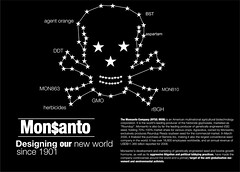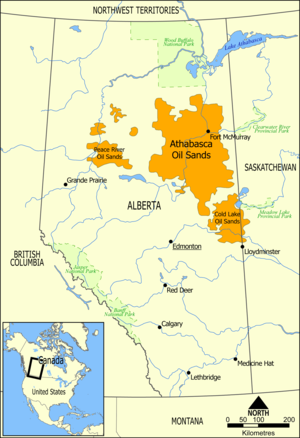 Image by Perfecto Insecto via Flickr
Image by Perfecto Insecto via Flickr
Mark Hyman, MD
Practicing physician and pioneer in functional medicine
Posted: May 22, 2010 08:00 AM
Vitamin D: Why You Are Probably NOT Getting Enough and How That Makes You Sick
What vitamin may we need in amounts up to 25 times higher than the government recommends for us to be healthy?
What vitamin deficiency affects 70-80 percent of the population, is almost never diagnosed and has been linked to many cancers, high blood pressure, heart disease, diabetes, depression,(i) fibromyalgia, chronic muscle pain, bone loss and autoimmune diseases like multiple sclerosis?(ii)
What vitamin is almost totally absent from our food supply?
What vitamin is the hidden cause of much suffering that is easy to treat?
The answer to all of these questions is vitamin D.
Over the last 15 years of my practice, my focus has been to discover what the body needs to function optimally. Vitamin D, a nutrient (more of a hormone and gene modulator) is a critical, essential ingredient for health and optimal function. The problem is that most of us don't have enough of it because we work and live indoors, use sun block and can't get enough from our diet--even in fortified foods.
Two recent studies in the journal Pediatrics found that 70 percent of American kids aren't getting enough vitamin D, and this puts them at higher risk of obesity, diabetes, high blood pressure and lower levels of good cholesterol. (iii) Low vitamin D levels also may increase a child's risk of developing heart disease later in life.
Overall, 7.6 million, or nine percent, of US children were vitamin-D deficient, and another 50.8 million, or 61 percent, had insufficient levels of this important vitamin in their blood.
The average blood level of vitamin D was 25 ng/dl for Caucasians and 16 ng/dl for African Americans. The optimal level is 45 ng/dl and requires about 3000-4000 IU a day of vitamin D3 -- 10 times current recommendations. If our whole population achieved a minimum level of 45 ng/dl, we would have 400,000 fewer premature deaths per year. There would be a reduction of cancer by 35 percent, type 2 diabetes by 33 percent and all causes of mortality by seven percent. (iv)
The economic burden due to vitamin D insufficiency in the United States is $40-$53 billion per year. This can be corrected for pennies a person per day.
Over the last five years, I have tested almost every patient in my practice for vitamin D deficiency, and I have been shocked by the results. What's even more amazing is what happens when my patients' vitamin D status reaches optimal levels. Having witnessed these changes, there's no doubt in my mind: vitamin D is an incredible asset to your health.
That is why in today's blog I want to explain the importance of this essential vitamin and give you six tips on how to get optimize your vitamin D levels.
Let's start by looking at the massive impact vitamin D has on the health and function of every cell and gene in your body.
How Vitamin D Regulates Your Cells and Genes
Vitamin D has a dramatic impact on the health and function of your cells. It reduces cellular growth (which promotes cancer) and improves cell differentiation (which puts cells into an anti-cancer state). That makes vitamin D one of the most potent cancer inhibitors--and explains why vitamin D deficiency has been linked to colon, prostate, breast and ovarian cancer.
But what's even more fascinating is how vitamin D regulates and controls genes.
It acts on a cellular docking station called a receptor that then sends messages to our genes. That's how vitamin D controls so many different functions--like preventing cancer, reducing inflammation, boosting mood, easing muscle aches and fibromyalgia and building bones.
Vitamin D also helps prevent the flu and colds and infections. In an observational study of Finnish soldiers, those with 25-hydroxyvitamin D levels higher than 16 ng/mL (40 nmol/L) had fewer respiratory infections than those with lower levels.(v) More recently, in a double-blind randomized controlled trial involving school girls, supplementation with 1200 IU/d of vitamin D3 during the wintertime significantly reduced influenza A infections.(vi)
These are just a few examples of the power of vitamin D. When we don't get enough it impacts every area of our biology, because it affects the way our cells and genes function. And many of us are deficient for one simple reason ...
Your body makes vitamin D when it's exposed to sunlight. In fact, 80 to 100 percent of the vitamin D we need comes from the sun. The sun exposure that makes our skin a bit red (called 1 minimum erythemal dose) produces the equivalent of 10,000 to 25,000 international units (IU) of vitamin D in our bodies.
The problem is that most of us aren't exposed to enough sunlight.
Overuse of sunscreen is one reason. While these product help protect against skin cancer--they also block a whopping 97 percent of your body's vitamin D production.
If you live in a northern climate, you're not getting enough sun (and therefore vitamin D), especially during winter. And you're probably not eating enough of the few natural dietary sources of vitamin D: fatty wild fish like mackerel, herring and cod liver oil or porcini mushrooms.
In addition, aging skin produces less vitamin D--the average 70-year-old person creates only 25 percent of the vitamin D that a 20 year-old does. Skin color makes a difference, too. People with dark skin also produce less vitamin D. And I've seen very severe deficiencies in Orthodox Jews and Muslims who keep themselves covered all the time.
With all these causes of vitamin D deficiency, you can see why supplementing with enough of this vitamin is so important. Unfortunately, you aren't really being told the right amount of vitamin D to take.
The government recommends 200 to 600 IU of vitamin a day. This is the amount you need to prevent rickets, a disease caused by vitamin D deficiency. But the real question is: How much vitamin D do we need for OPTIMAL health? How much do we need to prevent autoimmune diseases, high blood pressure, fibromyalgia, chronic muscle pain,(vii) depression, osteoporosis and even cancer?
The answer is: Much more than you think.
Recent research by vitamin D pioneer Dr. Michael Holick, Professor of Medicine, Physiology, and Dermatology at Boston University School of Medicine, recommends intakes of up to 2,000 IU a day -- or enough to keep blood levels of 25 hydroxy vitamin D at between 75 to 125 nmol/L (nanomoles per liter).(viii) That may sound high, but it's still safe: Lifeguards have levels of 250 nmol/L without toxicity.
Our government currently recommends 2,000 IU as the upper limit for vitamin D -- but even that may not be high enough for our sun-deprived population! In countries where sun exposure provides the equivalent of 10,000 IU a day and people have vitamin D blood levels of 105 to 163 nmol/L, autoimmune diseases (like multiple sclerosis, type 1 diabetes, inflammatory bowel disease, rheumatoid arthritis and lupus) are uncommon.
Don't be scared that amounts that high are toxic: One study of healthy young men receiving 10,000 IU of vitamin D for 20 weeks showed no toxicity.(ix)
You might have seen a recent study in the Journal of the American Medical Association that shows that a single high dose of 500,000 Units of vitamin D3 (one year's worth of vitamin D) increased the risk of falls and fractures in elderly woman.(x) Does this mean that vitamin D doesn't prevent fractures or falls? Absolutely not!
The design and logic of the study were completely wrong. As a friend once said, "The well meaning are often ill doing."
Imagine a study that gave people a year's worth of vitamin A, or iron (both are nutrients that are stored in the body like vitamin D) in one dose. The vitamin A would cause immediate liver failure and death. In fact, the way the Inuit used to kill explorers in the Arctic was to feed them polar bear liver, which gave them toxic doses of vitamin A. A year's worth of iron in one dose would cause severe intestinal problems and iron poisoning.
Biologically we understand why a single high dose of vitamin D may cause problems. A single high dose induces protective mechanisms that reduce the available vitamin D by increasing the activity of enzymes that cause the vitamin D to be broken down by the body. (xi) The body requires a balance of the right nutrients at the right dose at the right time. No one would eat a year's worth of anything in one day and expect it to be healthy.
The question that remains is: How can you get the right amounts of vitamin D for you?
6 Tips for Getting the Right Amount of Vitamin D
Unless you're spending all your time at the beach, eating 30 ounces of wild salmon a day, or downing 10 tablespoons of cod liver oil a day, supplementing with vitamin D is essential. The exact amount needed to get your blood levels to the optimal range (100 to160 nmol/L) will vary depending on your age, how far north you live, how much time you spend in the sun and even the time of the year. But once you reach optimal levels, you'll be amazed at the results.
For example, one study found that vitamin D supplementation could reduce the risk of getting type 1 diabetes by 80 percent.(xii) In the Nurses' Health Study (a study of more than 130,000 nurses over 3 decades), vitamin D supplementation reduced the risk of multiple sclerosis by 40 percent.(xiii),(xiv)
I've seen many patients with chronic muscle aches and pains and fibromyalgia who are vitamin D deficient--a phenomenon that's been documented in studies. Their symptoms improve when they are treated with vitamin D. A Danish study of Arabic women with fibromyalgia found significant vitamin D deficiency and recovery with replacement of vitamin D.(xv)
Finally, vitamin D has been shown to help prevent and treat osteoporosis. In fact, it's even more important than calcium. That's because your body needs vitamin D to be able to properly absorb calcium. Without adequate levels of vitamin D, the intestine absorbs only 10 to 15 percent of dietary calcium. Research shows that the bone-protective benefits of vitamin D keep increasing with the dose.
So here is my advice for getting optimal levels of vitamin D:
1. Get tested for 25 OH vitamin D. The current ranges for "normal" are 25 to 137 nmol/L or 10 to 55 ng/ml. These are fine if you want to prevent rickets -- but NOT for optimal health. In that case, the range should be 100 to 160 nmol/L or 40 to 65 ng/ml. In the future, we may raise this "optimal" level even higher.
2. Take the right type of vitamin D. The only active form of vitamin D is vitamin D3 (cholecalciferol). Look for this type. Many vitamins and prescriptions of vitamin D have vitamin D2 -- which is not biologically active.
3. Take the right amount of vitamin D. If you have a deficiency, you should correct it with 5,000 to 10,000 IU of vitamin D3 a day for three months--but only under a doctor's supervision. For maintenance, take 2,000 to 4,000 IU a day of vitamin D3. Some people may need higher doses over the long run to maintain optimal levels because of differences in vitamin D receptors, living in northern latitudes, indoor living, or skin color.
4. Monitor your vitamin D status until you are in the optimal range. If you are taking high doses (10,000 IU a day) your doctor must also check your calcium, phosphorous and parathyroid hormone levels every three months.
5. Remember that it takes up to 6 to 10 months to "fill up the tank" for vitamin D if you're deficient. Once this occurs, you can lower the dose to the maintenance dose of 2,000 to 4,000 Units a day.
6. Try to eat dietary sources of vitamin D. These include:
• Fish liver oils, such as cod liver oil. 1 TBSP (15 ml) = 1,360 IU of vitamin D
• Cooked wild salmon. 3.5 oz = 360 IU of vitamin D
• Cooked mackerel. 3.5 oz = 345 IU of vitamin D
• Sardines, canned in oil, drained. 1.75 oz = 250 IU of vitamin D
• One whole egg = 20 IU of vitamin D
• Porcini mushrooms 4 ounces = 400 IU of vitamin D
You can see now why I feel so passionately about vitamin D. This vitamin is critical for good health. So start aiming for optimal levels--and watch how your health improves.
Now I'd like to hear from you ...
Have you experienced any symptoms of vitamin D deficiency?
Do you think you are not getting enough sun?
Have you experienced any health benefits from getting more sun or correcting a vitamin D deficiency you may have had?
Please let me know your thoughts by leaving a comment below.
To your good health,
Mark Hyman, M.D.
References
(i) Wilkins C.H., Sheline Y.I., Roe C.M., et al. (2006) Vitamin D deficiency is associated with low mood and worse cognitive performance in older adults. American Journal of Geriatric Psychiatry. 14(12):1032-1040.
(ii) Holick, M. (2004). Sunlight and vitamin D for bone health and prevention of autoimmune diseases, cancers and cardiovascular disease [published online]. American Journal of Clinical Nutrition. (80)suppl:1678S-88S.
(iii) Kumar, J., Muntner, P., Kaskel, F., et al. (2009). Prevalence and associations of 25-hydroxyvitamin D deficiency in US children: NHANES 2001-2004. Pediatrics. 124(3):e362-e370.
(iv) Grant, W. (2009). In defense of the sun: An estimate of changes in mortality rates in the United States if mean serum 25-hydroxyvitamin D levels were raised to 45 ng/mL by solar ultraviolet-B irradiance. Dermato-Endocrinology. (1)4: 207-214.
(v) Laaksi I., Ruohola J.P., Tuohimaa P. et al. (2007). An association of serum vitamin D concentrations < 40 nmol/L with acute respiratory tract infection in young Finnish men. American Journal of Clinical Nutrition. 86(3):714-717.
(vi) Urashima, M., Segawa, T., Okazaki, M., et al. (2010). Randomized trial of vitamin D supplementation to prevent seasonal influenza A in schoolchildren. American Journal of Clinical Nutriton. 91(5)1255-1260.
(vii) Atherton, K., Berry, D.J., Parsons, T., et al. (2009). Vitamin D and chronic widespread pain in a white middle-aged British population: Evidence from a cross-sectional population survey. Annals of the Rheumatic Disease. 68(6):817¬-822.
(viii) Holick, M. (2006). Vitamin D deficiency. New England Journal of Medicine. 357(3):266.281. Review.
(ix) Heaney, R.P., Davies, K.M., Chen, T.C., et al. (2003). Human serum 25-hydroxycholecalciferol response to extended oral dosing with cholecalciferol. American Journal of Clinical Nutrition. 77(1):204-210.
(x) Sanders, K.M., Stuart, A.L., Williamson, E.J., et al. (2010) Annual high-dose oral vitamin D and falls and fractures in older women: A randomized controlled trial. Journal of the American Medical Association. 303(18):1815-1822.
(xi) Dawson-Hughes, B., Harris, S.S. (2010) High-dose vitamin D supplementation: Too much of a good thing? Journal of the American Medical Association. 303(18):1861-1862.
(xii) Hyppönen, E., Läärä, E., Reunanen, A., et al. (2001). Intake of vitamin D and risk of type 1 diabetes. A birth-cohort study. Lancet. 358(9292)1500-1503.
(xiii) Munger, K.L., Zhang, M., O'Reilly, E. (2004). Vitamin D intake and incidence of multiple sclerosis. Neurology. 62:60-65.
(xiv) Munger, K.L., Levin, L., Hollis, B., et al. (2006). Serum 25-hydroxyvitamin D levels and risk of multiple sclerosis. Journal of the American Medical Association. 296(23):2832-2838.
(xv) Glerup, H., Mikkelsen, K., Hass, E., et al. (2000). Commonly recommended daily intake of vitamin D is not sufficient if sunlight exposure is limited. Journal of Internal Medicine. 247(2):260-268.
Mark Hyman, M.D. practicing physician and founder of The UltraWellness Center is a pioneer in functional medicine. Dr. Hyman is now sharing the 7 ways to tap into your body's natural ability to heal itself. You can follow him on Twitter, connect with him on LinkedIn, watch his videos on Youtube and become a fan on Facebook.
 Image by gorgeoux via Flickr
Image by gorgeoux via Flickr![Reblog this post [with Zemanta]](http://img.zemanta.com/reblog_e.png?x-id=4cef8f42-1b82-46bf-a565-670f3bafe9b1)

![Reblog this post [with Zemanta]](http://img.zemanta.com/reblog_e.png?x-id=312aaa50-8e4c-496c-b4d0-591fa4231467)

![Reblog this post [with Zemanta]](http://img.zemanta.com/reblog_e.png?x-id=195e465e-76ad-4209-8571-fc2c5b776dac)
![Reblog this post [with Zemanta]](http://img.zemanta.com/reblog_e.png?x-id=86450575-f093-4ec9-bc04-f6a2179f7dfd)

![Reblog this post [with Zemanta]](http://img.zemanta.com/reblog_e.png?x-id=b1cdef42-a819-4197-9f5d-cd5fecf4514e)

![Reblog this post [with Zemanta]](http://img.zemanta.com/reblog_e.png?x-id=c11df1e5-8410-4ec0-96a6-b76993ac2617)

![Reblog this post [with Zemanta]](http://img.zemanta.com/reblog_e.png?x-id=6fa22e04-c8dd-442b-95ae-bbc23dedfc09)

![Reblog this post [with Zemanta]](http://img.zemanta.com/reblog_e.png?x-id=48b69e32-1bc1-406b-9776-2b0953316077)

![Reblog this post [with Zemanta]](http://img.zemanta.com/reblog_e.png?x-id=ad1789d3-feeb-4df9-a742-ebe6f17b6959)

![Reblog this post [with Zemanta]](http://img.zemanta.com/reblog_e.png?x-id=1f325d0e-2f3e-45b2-b7dc-9beaac759891)